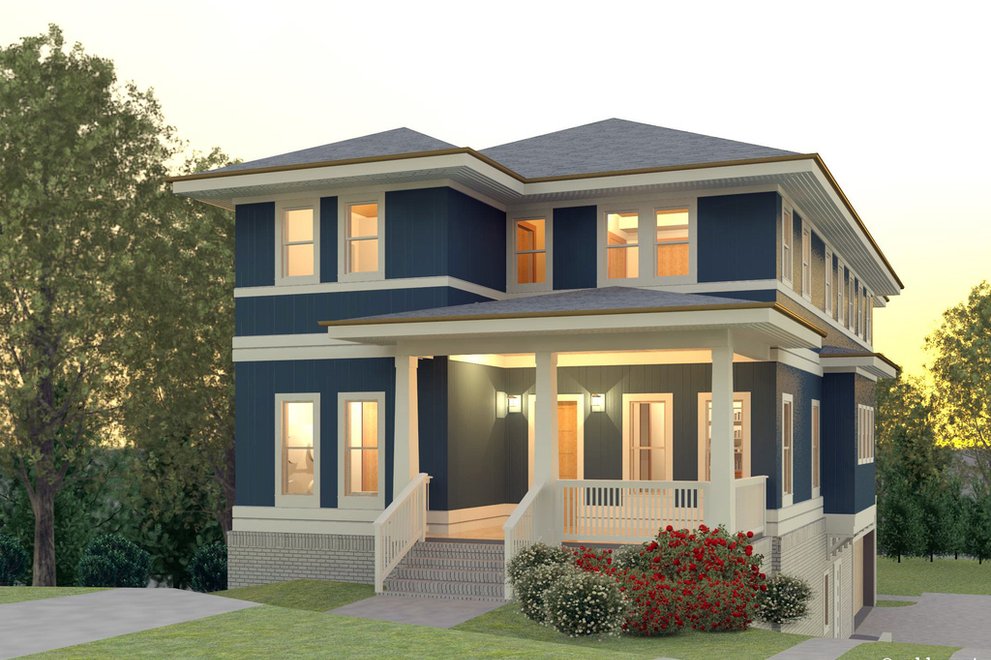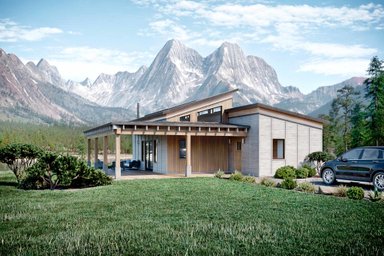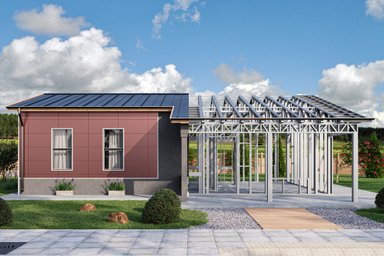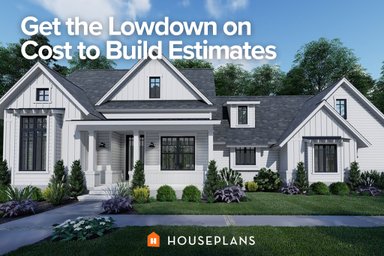If you’ve noticed homeowners adding rooms and remodeling basements
and garages like crazy to create in-law units (also called accessory dwelling
units [ADUs], backyard cottages, casitas and granny flats -- Plan 926-4, above, has an apartment), you’re not alone. Developers
have noticed, too, and some are building new multigenerational, multi-use homes
that include in-law suites and/or Airbnb rental rooms in the home. (See the layout for Plan 926-4 by Oakhurst, below). And experts
say the trend isn’t going to slow down soon.
Demographic Drivers
According to CBS MoneyWatch, the trend of U.S. families at multiple economic levels moving back in together to save on housing expenses began with the Great Recession. The trend has continued as more and more Baby Boomers age and care for their parents (or are cared for by their children) at home. In addition, according to Curbed, homes in major U.S. cities like San Francisco, Seattle and Los Angeles are nearly as impossible to afford now as in New York. Supply and demand (desirable locations with low rates of new housing construction), soaring tech salaries and the disappearance of middle class and blue-collar jobs are among the factors that are contributing to this trend. To provide some affordable housing alternatives, cities like Seattle and San Francisco are easing restrictions on building in-law units and providing incentives to encourage more homeowners to build these backyard cottages.
The In-Law Suite Solution
Now, some forward-thinking developers are building in-law suites into new homes and calling them multigenerational homes. “Multigenerational families living under one roof is a national trend that we’re seeing here,” says Tony Green, the managing partner at Pinehills LLC who is responsible for The Pinehills, a Plymouth, Massachusetts-based master planned community. “There are many cases of two generations living in the same home.” The Pinehills has developed 960 of the site’s 3,200 acres, preserving two acres of open space for every buildable acre.
According to Tom Martin, VP of planning/product at Aliso Viejo, California-based master developer FivePoint™ Communities, their company began to focus intensely on multigenerational homes approximately three years ago. “We were the forerunner in delivering in-law suites to the market,” Martin says. FivePoint, which has several developments in California, is co-owned by Miami-based Lennar Corp., a nationwide homebuilder that has implemented the in-law suite concept in other projects around the country.
Above is an example of a Lennar "NextGen Home Witihin a Home" design, where the in-law unit includes a one-stall garage (courtesy NextGen/Lennar).
And Kennecott Land Company, developer of the 4,000-acre Daybreak master-planned community in South Jordan, Utah, has its own version of a multigenerational home in the works, according to the company’s marketing director, Cameron Jackson. “We’re currently working with a builder on the in-law unit concept located on the main floor of the home, which is something new for us,” Jackson says. “Our plan is to test this concept, as we believe it’s a viable offering in our market. If the test is successful, we plan to expand it to a full suite of products with one or more builders across the project.” While the majority of Daybreak’s homebuyers are move-up families, customers include everyone from first-time homebuyers to seniors.
Flexibility and Affordability
Martin and Jackson agree that there is an underserved market of homebuyers looking for maximum flexibility and affordability. “It’s the evolution of the demographics that morphed into an entire product marketing strategy,” Martin says. Whether it’s people in their 50s and 60s taking care of aging parents at home, Millennials who could afford to buy their own home if they rent out an Airbnb suite, or retirees who could benefit from receiving stable rental income, families are discovering multiple benefits to multi-generational living. “We found that when we offered in-law suites at our projects, a large percent of purchasers would not have bought at the project had the suite not been offered,” Martin says. Jackson agrees. “We’ve seen some very interesting research data from John Burns and others that supports the viability of it,” Jackson says. “Depending on the market, a builder can justify the investment to meet the needs of several different living situations that are increasingly prevalent but underserved by the market.”
Functional Design
According to Martin, a typical in-law suite in a FivePoint community comprises a living area, glorified breakfast bar (including a microwave oven and sink), master bedroom and bathroom. Popular amenities include a locking door between the main house and the suite, a master bedroom or mini-master bedroom in the suite, and either a separate entrance or no separate entrance to the suite depending on family needs and preferences.
Where to place the in-law suite within the home is an important consideration. While some designers locate it on the main floor for convenience and accessibility (so that aging parents don’t have to go up or down any stairs), others create multi-level solutions like the Pinehills flex cottage.
“The idea is to create two distinct access points on the different levels—one for the home and another for the flex space,” Green says. Because the flex cottage lots slope down at a 12 percent grade from a cottage residential streetscape in the front to a commercial street in the rear, these homes are designed with the private home facing the neighborhood street, whereas underneath, on the walk-out lower level, an apartment (or business space) fronts the more commercial street. “If you opt to have a living area built on the walk-out lower level, a family member can live independently in an 850-square-foot, one-bedroom apartment with a private entrance, kitchen, living/dining area, half and full bathrooms, patio and parking,” Green says (image above shows a flex example at Pinehills with upper and lower entries, courtesy Pinehills).
Trending Up
“We’re probably in the early-adopter phase of the cycle,” Jackson says, “but as land becomes more scarce and the Baby Boomer generation continues to age, I think we’ll see more of these types of homes getting built, as long as there is a market and regulatory acceptance of them as a housing type.”
In the next one to three years, Jackson and Martin see this trend continuing to surge. “We see more builders jumping on the band wagon and testing it, and the leaders in the space, such as Lennar, continuing to refine what they’ve learned and get better at meeting market demand,” Jackson says. Martin agrees. “We’re just getting rolling,” he says. For a collection of plans with in-law suites, click here.
Demographic Drivers
According to CBS MoneyWatch, the trend of U.S. families at multiple economic levels moving back in together to save on housing expenses began with the Great Recession. The trend has continued as more and more Baby Boomers age and care for their parents (or are cared for by their children) at home. In addition, according to Curbed, homes in major U.S. cities like San Francisco, Seattle and Los Angeles are nearly as impossible to afford now as in New York. Supply and demand (desirable locations with low rates of new housing construction), soaring tech salaries and the disappearance of middle class and blue-collar jobs are among the factors that are contributing to this trend. To provide some affordable housing alternatives, cities like Seattle and San Francisco are easing restrictions on building in-law units and providing incentives to encourage more homeowners to build these backyard cottages.
The In-Law Suite Solution
Now, some forward-thinking developers are building in-law suites into new homes and calling them multigenerational homes. “Multigenerational families living under one roof is a national trend that we’re seeing here,” says Tony Green, the managing partner at Pinehills LLC who is responsible for The Pinehills, a Plymouth, Massachusetts-based master planned community. “There are many cases of two generations living in the same home.” The Pinehills has developed 960 of the site’s 3,200 acres, preserving two acres of open space for every buildable acre.
According to Tom Martin, VP of planning/product at Aliso Viejo, California-based master developer FivePoint™ Communities, their company began to focus intensely on multigenerational homes approximately three years ago. “We were the forerunner in delivering in-law suites to the market,” Martin says. FivePoint, which has several developments in California, is co-owned by Miami-based Lennar Corp., a nationwide homebuilder that has implemented the in-law suite concept in other projects around the country.
Above is an example of a Lennar "NextGen Home Witihin a Home" design, where the in-law unit includes a one-stall garage (courtesy NextGen/Lennar).
And Kennecott Land Company, developer of the 4,000-acre Daybreak master-planned community in South Jordan, Utah, has its own version of a multigenerational home in the works, according to the company’s marketing director, Cameron Jackson. “We’re currently working with a builder on the in-law unit concept located on the main floor of the home, which is something new for us,” Jackson says. “Our plan is to test this concept, as we believe it’s a viable offering in our market. If the test is successful, we plan to expand it to a full suite of products with one or more builders across the project.” While the majority of Daybreak’s homebuyers are move-up families, customers include everyone from first-time homebuyers to seniors.
Flexibility and Affordability
Martin and Jackson agree that there is an underserved market of homebuyers looking for maximum flexibility and affordability. “It’s the evolution of the demographics that morphed into an entire product marketing strategy,” Martin says. Whether it’s people in their 50s and 60s taking care of aging parents at home, Millennials who could afford to buy their own home if they rent out an Airbnb suite, or retirees who could benefit from receiving stable rental income, families are discovering multiple benefits to multi-generational living. “We found that when we offered in-law suites at our projects, a large percent of purchasers would not have bought at the project had the suite not been offered,” Martin says. Jackson agrees. “We’ve seen some very interesting research data from John Burns and others that supports the viability of it,” Jackson says. “Depending on the market, a builder can justify the investment to meet the needs of several different living situations that are increasingly prevalent but underserved by the market.”
Functional Design
According to Martin, a typical in-law suite in a FivePoint community comprises a living area, glorified breakfast bar (including a microwave oven and sink), master bedroom and bathroom. Popular amenities include a locking door between the main house and the suite, a master bedroom or mini-master bedroom in the suite, and either a separate entrance or no separate entrance to the suite depending on family needs and preferences.
Where to place the in-law suite within the home is an important consideration. While some designers locate it on the main floor for convenience and accessibility (so that aging parents don’t have to go up or down any stairs), others create multi-level solutions like the Pinehills flex cottage.
“The idea is to create two distinct access points on the different levels—one for the home and another for the flex space,” Green says. Because the flex cottage lots slope down at a 12 percent grade from a cottage residential streetscape in the front to a commercial street in the rear, these homes are designed with the private home facing the neighborhood street, whereas underneath, on the walk-out lower level, an apartment (or business space) fronts the more commercial street. “If you opt to have a living area built on the walk-out lower level, a family member can live independently in an 850-square-foot, one-bedroom apartment with a private entrance, kitchen, living/dining area, half and full bathrooms, patio and parking,” Green says (image above shows a flex example at Pinehills with upper and lower entries, courtesy Pinehills).
Trending Up
“We’re probably in the early-adopter phase of the cycle,” Jackson says, “but as land becomes more scarce and the Baby Boomer generation continues to age, I think we’ll see more of these types of homes getting built, as long as there is a market and regulatory acceptance of them as a housing type.”
In the next one to three years, Jackson and Martin see this trend continuing to surge. “We see more builders jumping on the band wagon and testing it, and the leaders in the space, such as Lennar, continuing to refine what they’ve learned and get better at meeting market demand,” Jackson says. Martin agrees. “We’re just getting rolling,” he says. For a collection of plans with in-law suites, click here.






